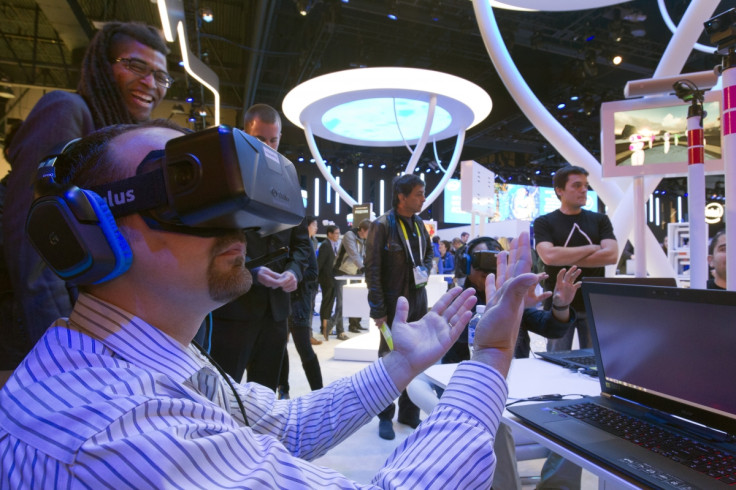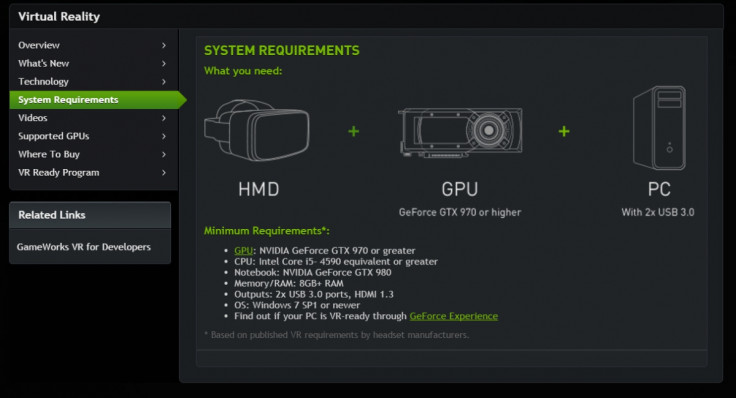CES 2016: Nvidia says computers today are not powerful enough to run virtual reality games

Although virtual reality headsets are finally making their way into consumers' hands, graphics processor manufacturer Nvidia is warning that consumer PCs today lack the computing power needed to run virtual reality games, and that much needs to change before graphics processors can cope.
Nvidia says that by 2016, there will only be 13 million computers in the world powerful enough run games that come with virtual reality graphics, which require graphics processors that are about seven times more powerful than the ones in PCs today. That figure amounts to less than 1% of the 1.43 billion computers expected to be in use by the end of 2016, according to latest estimates from Gartner.
To this end, Nvidia is launching a new programme at the Consumer Electronic Show (CES) 2016 later this week that will identify which consumer PCs on the market actually have what it takes to handle virtual reality graphics and offer a good performance.
How to become "VR Ready"
The 'GeForce GTX VR Ready' label will only be placed on the boxes of PCs that are able to render virtual reality graphics on a connected consumer VR headset at the rate of over 90 frames per second for the dual images required for each eye.
Laptops and desktop computers seeking to fit the bill will need to run on Intel Core i5-4590 CPU or better, feature USB 3.0 and HDMI 1.3, have at least 8GB RAM and run Windows 7 service pack 1 or a newer operating system.
Nvidia says that if virtual reality game developers use its Gameworks VR software to make virtual reality processing more efficient, it might be possible to get up to 25 million PCs to run virtual reality graphics properly, but the number is still a mere fraction of what it needs to be to make virtual reality PC gaming popular.
VR could be bigger on video game consoles

On the other hand, the graphics processor manufacturer notes that the potential for virtual reality games on video game consoles is far higher – Sony currently has an installed base of 30 million PlayStation 4 consoles, and these machines all have the capability to process virtual reality graphics far better than PCs can.
To give you an idea of the huge headache facing games developers, PC makers and chipset manufacturers, Jason Paul, general manager of Nvidia's Shield, gaming and VR business told VentureBeat: "We see the potential of VR as very large, but we also see a big challenge as far as the computing power that's required. If you look at your typical PC gaming experience, 90% of the gamers out there play at 1080p.
"For a smooth experience you don't want to go below 30fps. Compare that to VR where the displays are about 2K, but you have to render closer to 3K, and you don't want to go below 90fps. It's about a sevenfold increase in raw performance to render for VR versus traditional PC gaming. You have to do that in less than 20 milliseconds from head rotation to what shows up on your display."
Paul said that to fix the problem, Nvidia is now working on much faster graphics processors that are specially architected to work with virtual reality and stitch together 360 video, and building software and drivers to ensure that virtual reality graphics don't lag or freeze on PCs.
© Copyright IBTimes 2025. All rights reserved.





















